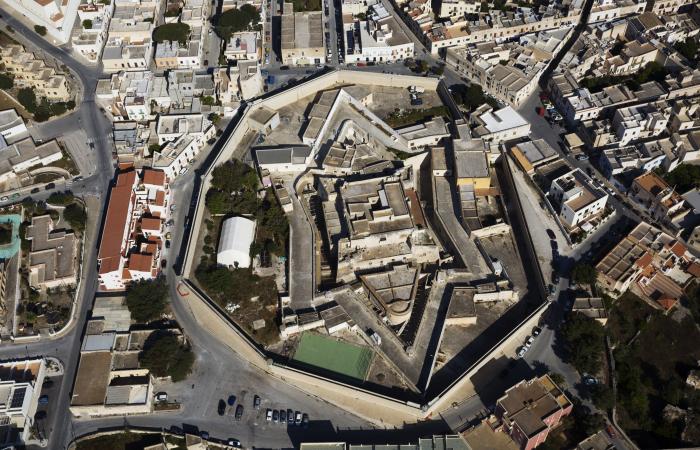The Castle of S. Giacomo
The Castle of S. Giacomo
At Favignana, in the Egadi islands, located in the north-western part of Sicily, there is a castle trapped in a prison. Once it was the castle of St. James, which along with two other fortresses was a structure used for the defense of the island. Today, the castle is visible only from the mountain that overlooks the city because a prison was built outside its walls, and it is, therefore, not accessible to the public. The construction of this castle is due to Roger I of Altavilla, the first Norman Count of Sicily. Historical documents report that the castle's construction dates back to between 1074 and 1101. About 400 years later, during the Aragonese domination, Ferdinand II, known as the Catholic, ordered the reconstruction of the castle of St. James based on the pre-existing one. The castle's name is due to a small church inside the fortress walls dedicated to St. James, the patron saint of Spain. According to local historians, the Aragonese king ordered the Lord of Favignana, Andrea Riccio, to fortify the island against Turkish raids that roamed the Sicilian sea with hostile intentions.
The structure of the castle of S. Giacomo
The structure of the castle of St. James has a star shape seen from above, with an inner, square part called "maschio" and a surrounding part that forms triangles. Located in the heart of the city, the castle is visible to anyone, thanks to the high walls that surround it. The lower part of the castle is built into the tuff rock's cavities and, therefore, is below street level. This part is separated from the rest of the buildings by a moat that surrounds it. At the time of its construction, these underground passages served as an armory and housing for the garrison, safely away from any external attacks. The upper walls of the castle are typical with loopholes useful for defense. Originally, there were two drawbridges, one outside and one in the middle, between the maschio and the outer part of the structure. Today, where the outer drawbridge was, there is the entrance to the prison. The other bridge was also modified during the transformation of the castle of St. James from fortress to penitentiary.
Why did the castle become a prison?
In reality, it is not a forced transformation. The concept that the castle of St. James is a prison is deeply rooted in Favignana island. Since the Bourbon times, prisoners were confined within its walls, and the confinement of prisoners continued on that island even under the Savoys and during fascism. In all honesty, not only the castles of Favignana, such as the castle of St. James and the castle of St. Catherine, have been prisons for centuries, but the island itself, since the Bourbon times, was a place to confine criminals and deportees. Therefore, the transformation of the fortress of St. James into a prison after the war was natural, and in the 1970s, it became a maximum-security prison. In recent decades, neglect and dilapidated, damp cells have led to reconsider the "position" of the prison, and the intention is to transfer the penitentiary elsewhere. In fact, the construction of the new structure is completed, and shortly, the castle of St. James will see the light again.
The imprisoned castle
Unlike the Castle of Santa Caterina, located in the highest part of the island, the Castle of San Giacomo is well-preserved, as its perimeter was protected by other walls that constituted the prison of Favignana. In fact, the entire prison was built around the castle, not inside, and an adjacent area was used as a work camp, and it is precisely there that the new prison will arise. The time when the island of Favignana was a place of confinement is now fortunately over. Today, thanks to tourism, more and more people can admire the beauty of this island with its tuff rocks, emerald sea, and historic monuments. Everyone is waiting for the moment when the Castle of San Giacomo will reclaim its place on the island, and when the walls of the prison will crumble, so will everything that has taken place inside, becoming a part of the history of this castle whose foundations have been standing for about a millennium, and it seems they intend to resist the next one too.
